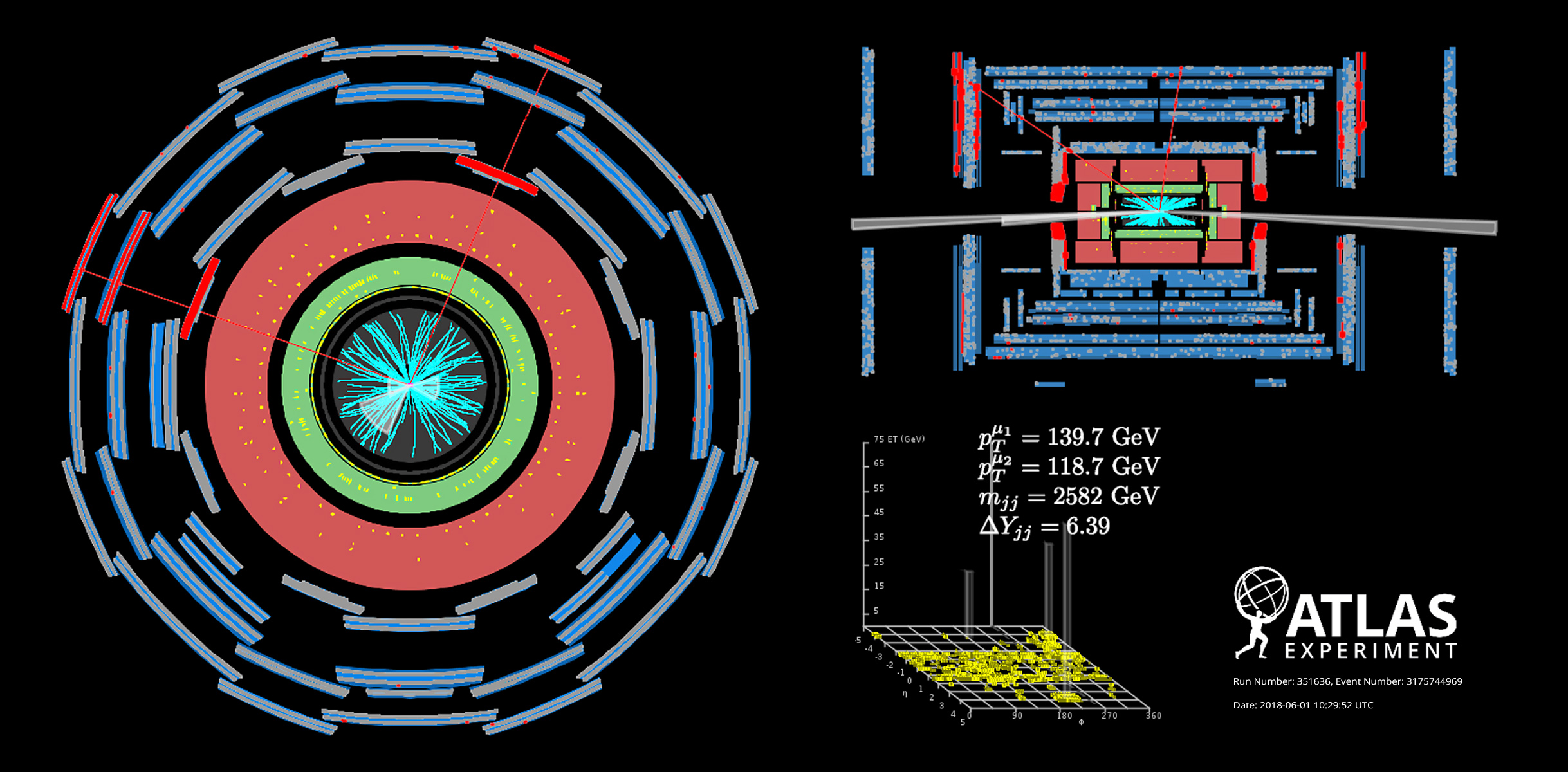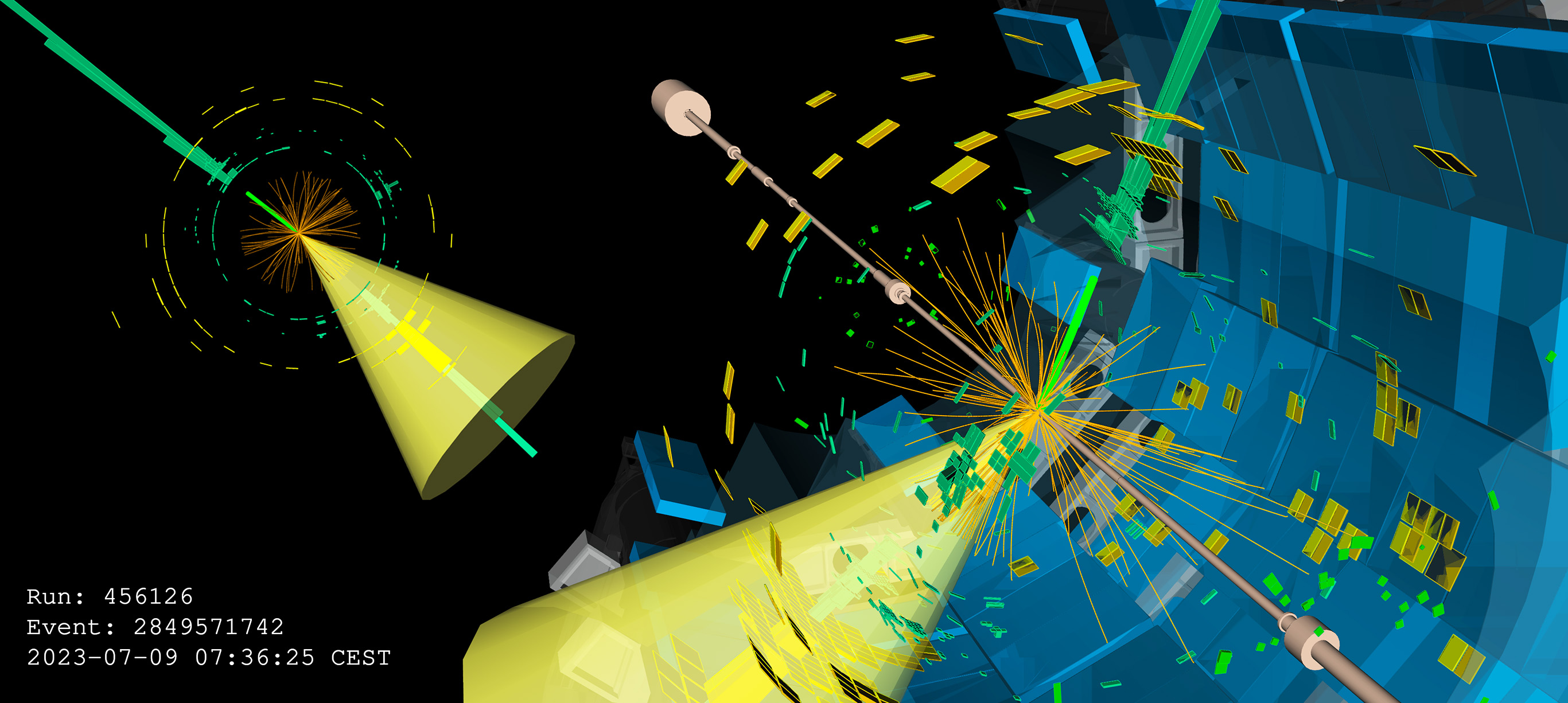ATLAS hunts for new physics in the scattering of W bosons
8 August 2023 | By
The W bosons – carrier particles of the weak force – have a rather remarkable feature: they can self-interact. This feature can be studied at the ATLAS experiment in rare vector-boson scattering (VBS) processes (Figure 1a). VBS processes play a special role within the Standard Model, as they are closely related to the Higgs mechanism and can proceed via an exchange of a Higgs boson. By studying these processes, ATLAS physicists can explore multiple new-physics models, including anomalous self-interactions of the W bosons and extended Higgs sector with additional Higgs bosons.
One such additional Higgs boson is the hypothesised doubly-charged Higgs (H±±) boson. In a new study, ATLAS researchers searched for H±± bosons with masses ranging from 200 to 3000 GeV using the Georgi-Machacek model – an extension of the Standard Model which predicts a new hypothetical Higgs field. In this model, a H±± boson would be produced and would decay to two same-sign W bosons (Figure 1b). This would leave a signature in the ATLAS detector with two same-sign charged leptons (muons or electrons) and neutrinos from the W-boson decays.
In addition to searching for new charged Higgs bosons with this signature, ATLAS researchers have also explored the mysterious nature of neutrinos. Neutrinos have a tiny, non-zero mass, which cannot be satisfactorily explained by the Standard Model. In 1937, Ettore Majorana proposed that neutrinos may be their own antiparticles – an intriguing idea, which would also explain neutrino mass. The Majorana nature of neutrinos can be studied at the LHC in the scattering of two same-sign W bosons mediated by heavy Majorana neutrinos (Figure 1c). This would leave a signature in the ATLAS detector with two same-sign muons but, in contrast to the H±± boson search, no neutrinos.

ATLAS researchers are studying rare vector-boson scattering processes in the search for physics beyond the Standard Model.
Both new ATLAS results probed the full LHC Run 2 dataset (collected 2015-18), looking in the ATLAS detector for the remarkable experimental signature left by two same-sign W bosons. As shown in the event display, two same-sign charged leptons are accompanied by two “jets” of particles close to the LHC beamline with large angular separation. The main background process in both of these searches is the Standard-Model electroweak scattering of two same-sign W bosons (Figure 1a).
ATLAS researchers used the momentum transverse to the beamline of the second-highest muon to discriminate between the Heavy Majorana Neutrino signal and the Standard-Model backgrounds (Figure 2a). No significant excess with respect to the Standard-Model prediction was observed and ATLAS researchers extended their sensitivity to heavy Majorana neutrino masses to 20 TeV.
Similarly, the transverse mass of the two W bosons was used to discriminate between the H±± boson signal and the Standard-Model background processes (Figure 2b). Overall an agreement with the Standard-Model predictions was seen, with an exception of an intriguing local excess of events over the Standard-Model prediction consistent with a H±± boson of mass of about 450 GeV. The global significance of this excess of events is 2.5 standard deviations. With this result, ATLAS researchers set stringent constraints on the Georgi-Machacek model.
There remains much to be learned about the Higgs sector and possible existence of Majorana neutrinos! ATLAS physicists look forward to collecting and analysing data from the ongoing LHC Run 3, as the sensitivity of these searches to potential new particles will only continue to grow with more data.
Learn more
- Measurement and interpretation of same-sign W boson pair production in association with two jets in proton–proton collisions at a center-of-mass energy of 13 TeV with the ATLAS detector (ATLAS-CONF-2023-023)
- Search for Majorana neutrinos in same-sign WW scattering events from proton–proton collisions at 13 TeV (arXiv:2305.14931, see figures)
- Lepton Photon 2023 presentation by Shu Li: Vector boson scattering measurements in ATLAS






